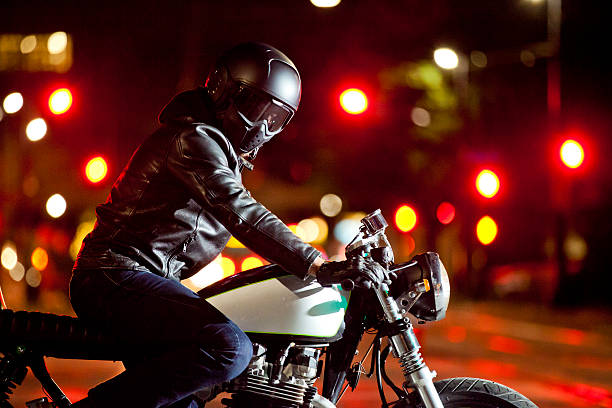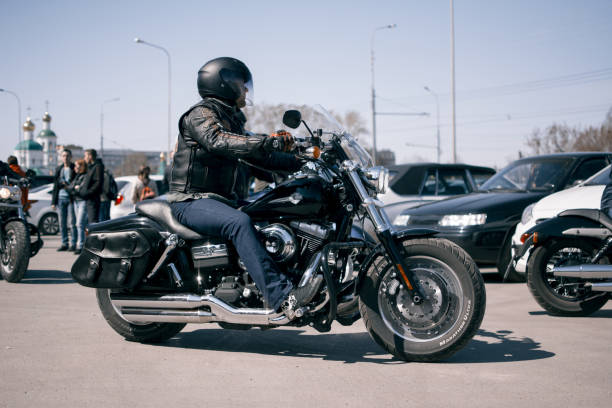Coordinating Your Biker Vest Brown with Other Gear
The biker vest brown is more than just clothes. It symbolizes a rustic, free, road-connected lifestyle. Integrating your brown biker vest with your other gear can improve your style and comfort, whether you are a pro or a beginner. We explain how to coordinate your brown biker vest with your helmet, boots, gloves, and pants.

Any biker’s clothing starts with their vest. Brown leather biker vests are flexible, fashionable, and protective. When pairing your vest with other pieces, consider usefulness and style.
Pairing your brown vest requires color coordination. Brown is neutral and earthy, blending well or standing out. Wear your brown vest over a black or dark gray shirt and corresponding slacks for a sleek, monochrome look. The contrast is slight without dominating your vest’s brown color.
Consider your vest’s brown temperature for greater liveliness. Warm browns go well with burnt orange and mustard yellow, which bandanas and belts can incorporate. More excellent browns go well with olive green or cool blue, which are great for t-shirts and button-downs.
The texture and material of the apparel worn with your brown biker vest also affect your look. Classic leather pants or chaps provide protection and style. If leather isn’t your thing, hefty jeans or cargo pants can match the vest’s toughness.
The helmet is the most essential safety gear. You don’t have to choose a brown helmet to match your brown vest, but it can work if the hues match. Instead, look for helmets with bronze or gold lines or artwork that match the vest’s hue to complete the look.
Gloves and boots protect and look good. Choose gloves with brown embellishments or stitching to match your vest. Brown leather is natural for boots. Your boots’ brown tone should complement the color palette, not clash with your vest. Choose boots that are comfortable, safe, and biker-chic.
Bikers layer their apparel, including biker vests, for style and protection. In winter, a brown leather jacket can be worn with the vest. When wearing a coat over your vest, use lighter, more distressed leather to match its rugged texture. Alternatively, a denim jacket in a classic blue might contrast nicely with the brown without clashing.
Accessories can make or ruin an outfit. Brown motorcycle vests should be paired with watches, bracelets, and sunglasses that match or contrast. You can achieve an old-school look with a leather-strapped watch or bronze aviator sunglasses.
You can also tie your outfit using belts. A hefty leather belt that matches your boots can look good. If your vest and pants are simple, a belt with a buckle can stand out.
Your brown biker vest can be worn with regular clothes when you’re not riding. A simple white tee, distressed light denim, and brown boots make a casual but polished outfit.
Matching your brown motorcycle vest with your other clothing requires more than matching colors. An integrated design that expresses your personality and riding lifestyle is critical. Try different colors, textures, and accessories to find your style while driving safely. You want your brown biker vest to be the focal point of your ensemble. This method improves your style and makes you seem and feel nice on the highway.

Essential Maintenance: Preserving Brown Leather Motorcycle Gear
A biker vest brown is more than simply clothing it’s a travel companion. Leather gear needs special care to appear and perform well. Leather is sturdy but requires care to maintain its quality and durability. With these expert techniques, keep your brown leather motorbike vest, jacket, boots, and gloves in top shape.
Leather motorcycle gear is stylish and protective against the elements and road hazards. Regular maintenance starts with understanding leather’s unique needs, especially given how sun, wind, and rain may damage it. Each piece, from your brown leather biker vest to your tough boots, has a narrative and maintenance needs.
Care for your leather gear starts with cleaning. Leather loses quality and beauty when oils, filth, and sweat collect. Use a moist towel to clean leather objects gently. This removes surface debris and prepares leather for deep cleaning. For a deeper clean, use a leather cleaner. Apply a tiny amount to a soft cloth and rub it into the leather in circular motions, paying particular attention to jacket collars and underarms, which absorb more body oils.
Avoid aggressive cleaners like alcohol and bleach since they remove leather from its natural oils, causing dryness and cracking. Choose a pH-balanced, mild leather soap. Wipe soap residue with another clean, wet towel after cleaning. Leather clothing can distort and crack if exposed to direct heat or sunlight.
Conditioning your brown leather motorcycle gear is probably the most crucial step. Leather conditioners replenish moisture lost after cleaning and prevent dryness and cracking. Choose a leather conditioner that matches your type. Test it on your gear’s tiny, inconspicuous area to verify color and texture retention.
Apply a little conditioner to the leather with a soft cloth and rub it in circles. It should be absorbed and dried before applying a second application if needed. When adequately conditioned, the leather should be smooth and shiny without being oily.
Motorcycle leather gear regularly endures harsh weather. Riders frequently riding in the rain may benefit from waterproofing sprays or waxes. Follow manufacturer recommendations for waterproofing. Test the product on a tiny area, like conditioning, to avoid leather discoloration.
Regularly applying a waterproofing chemical can prevent water stains and reduce leather moisture absorption, which can cause mildew and rot. Waterproofing improves leather’s water resistance but doesn’t replace appropriate drying and storing.

Storage is another essential part of leather motorcycle gear maintenance. Keep leather items cool, dry, and out of direct sunshine to prevent fading. To avoid creases, hang jackets and vests on broad, padded hangers. Avoid plastic covers, which trap moisture; choose breathable fabric covers or leave your gear exposed.
Cedar shoe trees and glove forms assist leather boots and gloves in retaining shape and absorbing moisture. Avoid storing leather in moist or humid circumstances to prevent mold and mildew growth.
Accidents can discolor or harm leather goods, even with care. Blot spills and stains promptly using a soft, wet cloth. Rubbing can deepen the stain on leather. Specialized leather stain removers may be needed for persistent stains.
With a soft cloth and leather conditioner, tiny scratches can be polished to give the leather a clean look. Leather repair kits can fill and color-match more severe damages.
Leather gear should be checked for wear and tear regularly. Over time, seams, zippers, and buckles might weaken. Early diagnosis of loose threads or cracked leather helps prevent costly replacements.






Leave a Reply